Monitoring Healing: Environmental Cleanup and Community Resilience in East Palestine
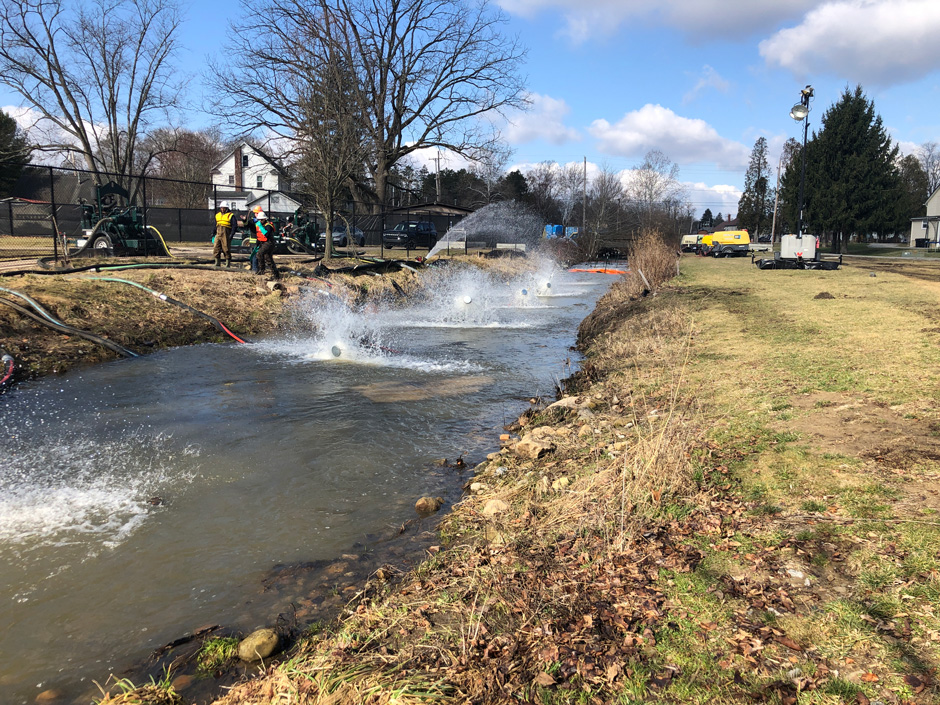 Aeration equipment deployed within Leslie Run. (Credit: EPA)
Aeration equipment deployed within Leslie Run. (Credit: EPA)On February 3rd, 2023, East Palestine was devastated by a train derailment that led to the introduction of hazardous materials into the air, soil and waterways. Around 9:00 pm, an overheated wheel bearing led to the derailment of 38 Norfolk Southern rail cars, 11 of which contained hazardous materials. Local hazmat groups were the first to respond to the emergency—one of whom was Kevin Clark, an on-scene coordinator with the EPA. The night Clark arrived, he was there in his volunteer hazmat capacity, and he knew that the cleanup would require EPA involvement.
Mark Durno, EPA Region 5’s Homeland Security Coordinator, summarized the call, “He called one of our phone duty officers and said, ‘Hey, this is one of the biggest ones I’ve seen. You guys need to send the cavalry.’”
Following the call for help, the EPA mobilized teams from EPA Regions 3 and 5 to help respond. As soon as the teams arrived, they immediately started supporting Ohio EPA by setting up stationary and roving air monitoring systems. Over the week following the vent-and-burn event that occurred a few days after the EPA’s arrival, the team realized the response would require significant time and effort from numerous parties.
While the EPA had originally planned to step back and leave the long-term cleanup project oversight remaining with the Ohio EPA, the ash and soot cloud, paired with other environmental impacts, raised the project’s stakes. Durno explains, “We realized that there was no way the federal government was stepping back from the situation.”
On February 21st, the EPA issued a unilateral administrative order to Norfolk Southern, effectively becoming the lead agency for this response. While the EPA took over as the lead agency, local groups have remained actively involved in the monitoring and cleanup process, as the effects of the derailment could spread and stay in the landscape for years.
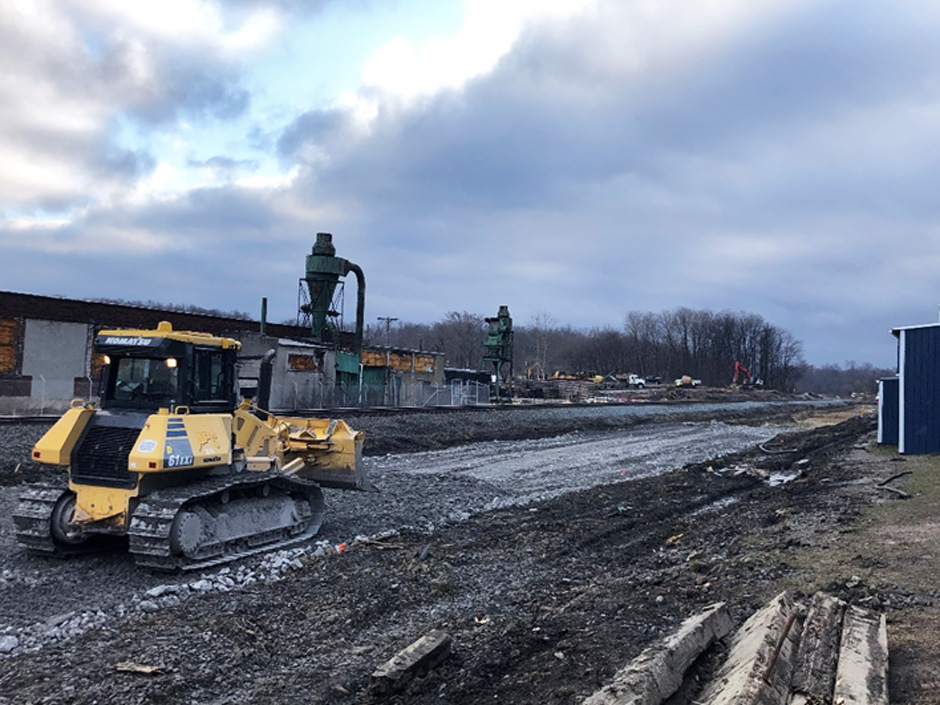
A cleared area of the south track is backfilled with clean material and graded. (Credit: EPA)
Impacts of the East Palestine Train Derailment
These long and short-term effects originate from three primary chemicals of concern: vinyl chloride, n-butyl acrylate and 2-ethylhexyl acrylate. When the derailment occurred, fires resulting from the destroyed tankers led to concerns that the vinyl chloride could lead to an explosion. To prevent this, the railroad company, Norfolk Southern, controlled the release in a vent-and-burn event. The EPA closely monitored conditions before, after and during the event.
A significant butyl acrylate release along with some petroleum products contaminated Sulphur Run. The effects of this particular contamination could reach far beyond the boundaries of East Palestine. Sulphur Run flows through the town and then meets Leslie Run, which connects to a series of other creeks, like Little Beaver and Bull Creek, that link the Ohio River with the contaminants.
Following the spill, there was a substantial fish kill as well as the loss of many other aquatic organisms, totaling around 40,000 organisms. Thanks to the EPA’s efforts, the region has seen the return of some native aquatic species. Endangered Eastern Hellbender Salamanders, small fish and minnows have returned to Little Beaver Creek.
While there have been great milestones of success over the past few months, there is still a great deal of work that must be done. “It’s still a work in progress,” says Durno.
The primary long-term concern is drinking water. While the cleanup plan is comprehensive, it is impossible to guarantee that the site will be entirely clean—“You can never guarantee that you’re going to get every molecule of the contaminants out of the soil,” states Durno.
Monitoring sources for drinking water will be managed by the Ohio EPA once the Unified Command has completed the initial cleanup. The Ohio EPA is establishing sentinel wells as an early warning system that will be monitored and help discover contaminants in groundwater.
Regarding short-term concerns, the EPA is most concerned with completing the cleanup of Leslie Run. At the same time, they are focused on following community concerns and monitoring the area. When necessary and possible, the EPA will conduct further assessments to help ease public concerns.
While the area directly below the tracks has been cleared, more sampling is still needed. North of the tracks, where the tankers were burned, the EPA plans to assess the area and determine what contaminants might still linger. The short-term plans for the project are to continue the cleanup process and conduct surveys to assess the health of the landscape.
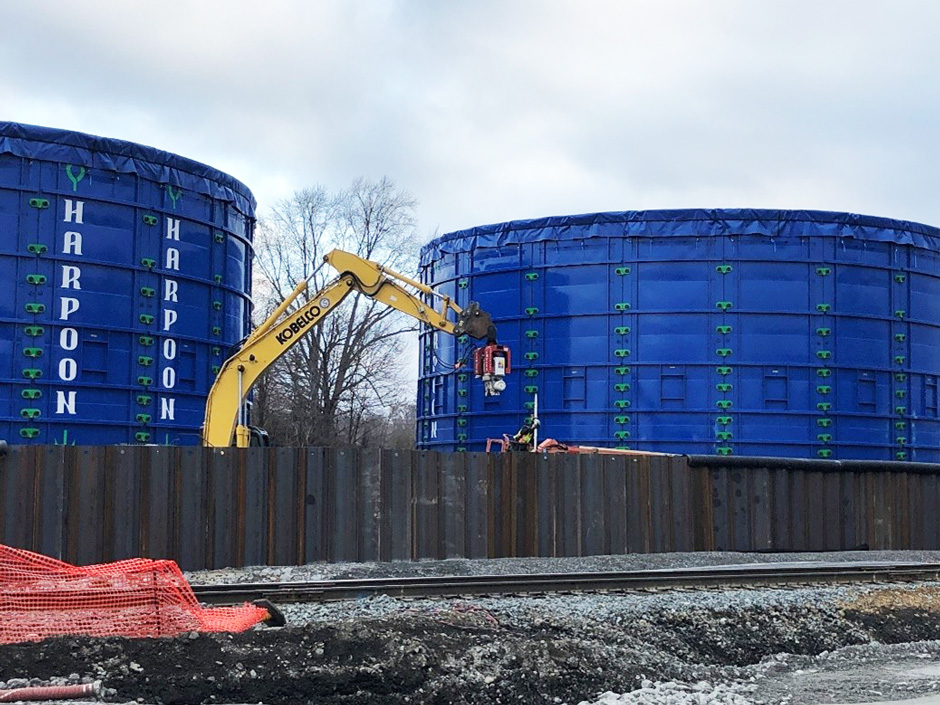
Sheet piling is installed around the two blue lake tanks as a method for secondary containment. The lake tanks will temporarily stage wastewater from the derailment site while trucks transport these liquids off-site for disposal. (Credit: EPA)
Monitoring Chemical Spills
Air, water and soil monitoring have been cornerstones of the EPA’s efforts following the derailment. The system combines telemetry, handhelds and roving stations that gather environmental data. Devices equipped with telemetry allow the team to transfer data from the field, making it accessible elsewhere.
While some instruments deployed in East Palestine passively collect and send data to the cloud over time, manual sampling is regularly conducted as well. This mixture ensures the remote devices are working correctly. James Justice, an on-scene coordinator with the EPA, describes this partnership as a combination of monitoring and sampling.
In terms of air monitoring, the EPA utilizes five gas meters that include photoionization detector (PID) lamps. These lamps can measure a wide range of chemicals with ionization potentials within the range of the lamp. They also use Summa canisters to sample for a large list of compounds, and sorbent tubes and badges for specific chemicals. Following the initial vent-and-burn event, the EPA deployed several Single Point Monitor Flex Units to monitor for hydrogen chloride and phosgene—potential toxic byproducts of the burning of vinyl chloride.
As the cleanup project has stretched on, the monitoring has continued and gotten more advanced. Additional technology like the Trace Atmospheric Gas Analyzer (TAGA), a self-contained mobile mass spectrometer that can be tuned to monitor specific chemicals, has been deployed. The EPA also has a portable Gas Chromatography-Mass Spectrometry Unit, which is stationed wherever there are complaints of odors that may indicate contaminants. Norfolk Southern supplied a Proton Transfer Reaction Mass Spectrometry unit, a mobile laboratory similar to the TAGA but more precise, capable of monitoring single parts per billion.
Through the partnership of real-time and manual monitoring, the EPA has been able to better understand the spill’s impacts on the region and how to move forward. Justice explains, “Real-time data collection allows for decisions to be made in real time, like proper engineer controls, or even stopping work if we start seeing things on the air monitoring equipment.” He continues, “Air monitoring and sampling will continue until those other areas are all assessed and have been remediated as needed.”
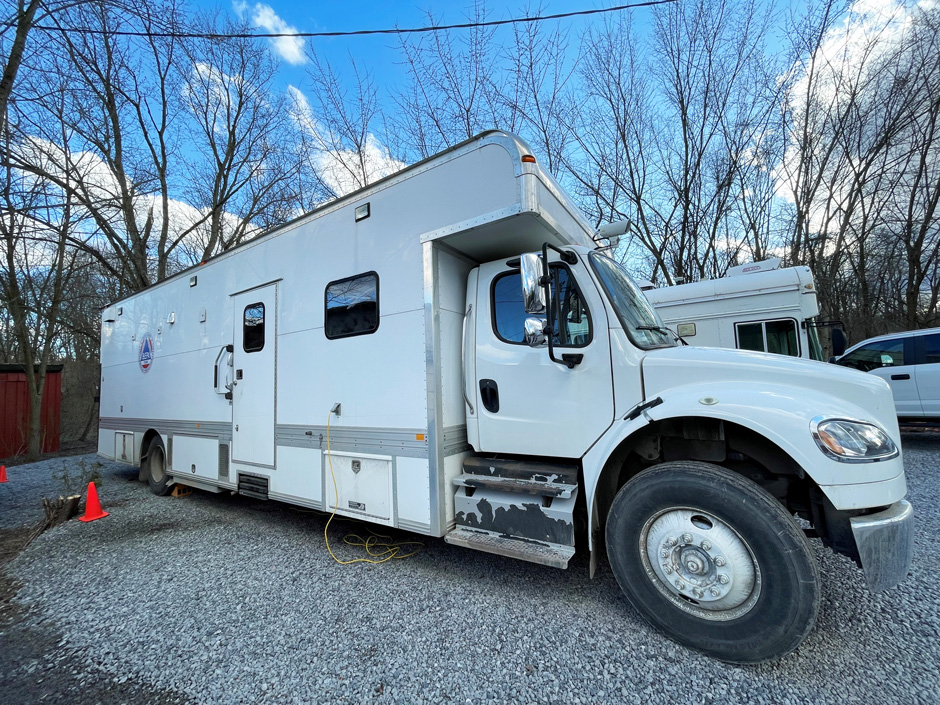
EPA’s Trace Atmospheric Gas Analyzer (TAGA) is used for advanced air monitoring near the derailment site. (Credit: EPA)
Clean Up and Healing from the Derailment
While derailments can be devastating to the local environment, they can also become traumatizing events for local people. Destroyed property, health issues connected to the disaster, fear of another incident and long-term anxiety surrounding the safety of drinking water and air quality are all common stressors following incidents like the East Palestine derailment. Monitoring and restoration efforts will help begin the long process of healing from this traumatic event.
The first step was removing the debris from the derailment, then clearing the streams and terrain. While the long-term cleanup strategy is still being discussed, Norfolk Southern is expected to remediate local waterways to residential standards and take on the responsibility and liability of funding the cleanup. Specifics on long-term surface water and sediment assessment are still in progress.
In the meantime, the EPA and Ohio EPA are overseeing Norfolk Southern’s efforts to address contamination in surface waters with the use of aeration systems and sediment washing. So far, their efforts have been successful in Leslie Run, which has shown significantly reduced contaminant loads. There is still much to be done, particularly in Sulphur Run, and the EPA is dedicated to ensuring they don’t leave contamination behind.
Community work is included in project management as the EPA tries to restore the environment and ease the public’s concerns. They publish a weekly newsletter and hold weekly public information sessions to help keep everyone informed on the cleanup as well as to connect with the public and learn what they can do to help people feel comfortable again. Durno states, “It’s important to recognize that it’s more than just the technical stuff; we’ve got a pretty strong community presence here as well.”
There are signs of healing everywhere in the community of East Palestine. On April 8th, the city held an Easter egg hunt, its first community event following the derailment. The hunt was held in City Park, an area that had been high on the list of locations to sample and monitor for contamination. Durno explains, “The city wanted to start the healing process by being able to identify some areas where there was no question that they were safe.”
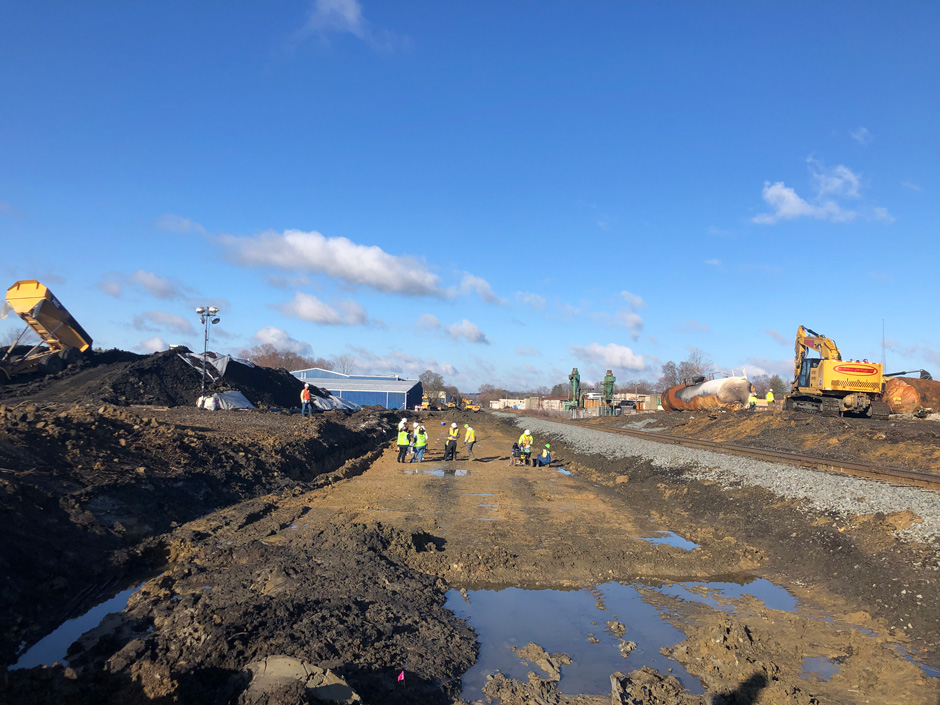
Norfolk Southern and EPA conducting soil sampling beneath the excavated rail track area. (Credit: EPA)
Conclusion
The results of the City Park assessments revealed levels at the lower end of normal for the compounds they were looking for. “To me, that was a significant milestone, just from my part in this seeing that community event being able to take place just two months after the derailment,” says Durno.
Other milestones are a testament to the gravity of this event. Over 50,000 tons of materials and over 19 million gallons of water have been shipped off-site so far, a reminder that this was not a small spill. Norfolk Southern removed 1900 feet of track on the north and south sides combined, and rebuilding of the tracks is finally set to begin in June. “Those are some of the things you can sit back and look at and say, ‘We’re making progress.’ It’s baby steps for making progress,” states Durno.
The fear and anxiety experienced by the public weigh heavily on hazmat responders like Justice and Durno, scientists who have worked countless derailments in the past and are familiar with the scars left behind as they’ve worked in various towns and cities over the years. Durno explains that it can take years for people to recover from traumatic events like this.
Still, community events like the Memorial Day Parade that took place May 29th, only about a mile away from the site, are essential parts of this process. “Just over a mile away from the site, they were able to get that sense of normalcy going again.” He continues, “Those little things are what will continue to help.”
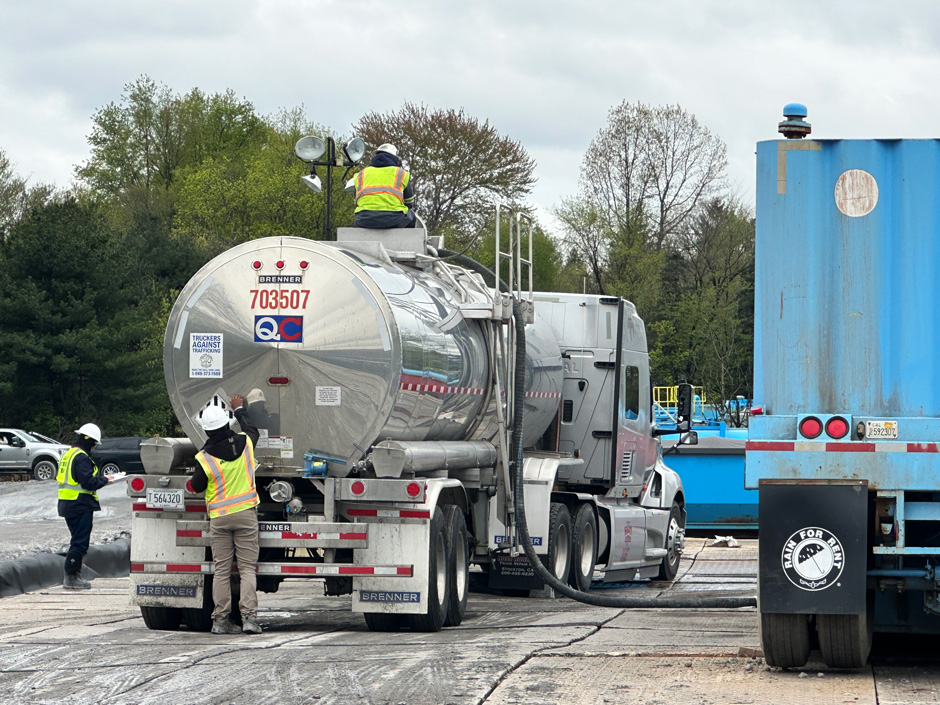
Liquid waste is loaded, labeled, and logged within a secondary containment area. (Credit: EPA)




0 comments